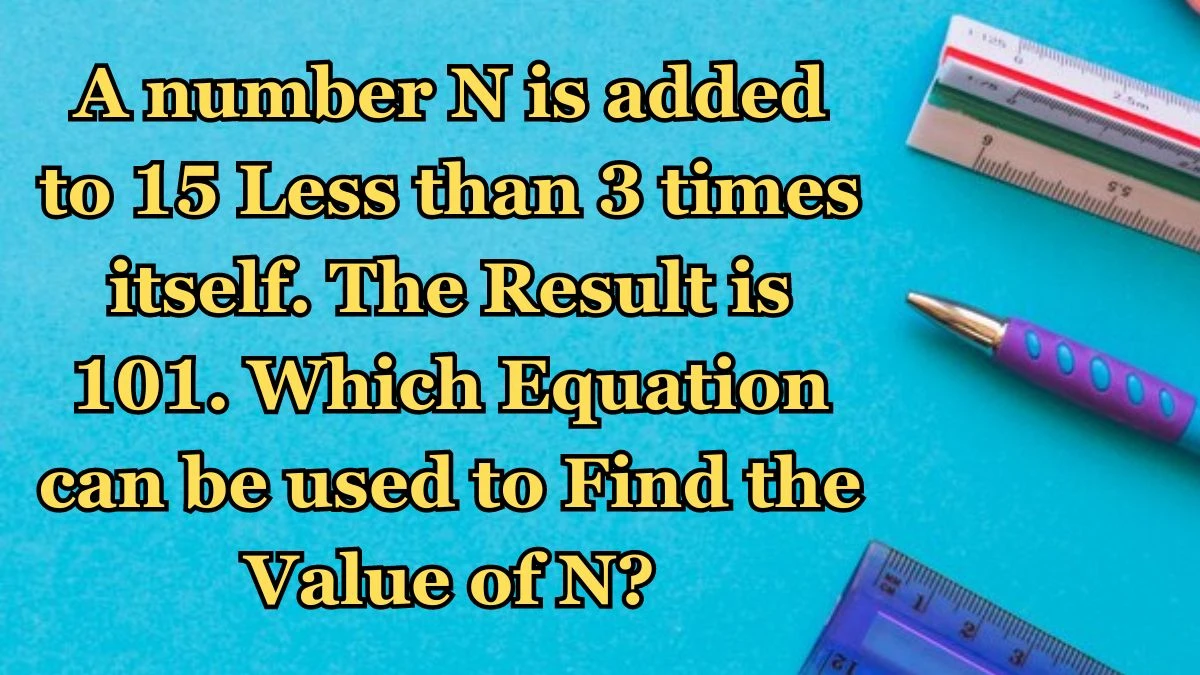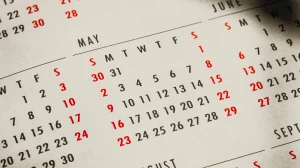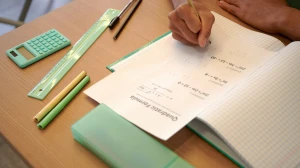A number N is added to 15 Less than 3 times itself. The Result is 101. Which Equation can be used to Find the Value of N?
by
Updated Jun 04, 2024

A number N is added to 15 Less than 3 times itself. The Result is 101. Which Equation can be used to Find the Value of N?
The problem states that a number N is added to "15 Less than 3 times itself," resulting in 101.
N+(3N−15)=101.
The expression "15 Less than 3 times itself" represents 3N−15,
which is 3 times the number N minus 15.
Formulating the Equation:
By setting up the equation
N+(3N−15)=101, we create a linear equation that represents the relationship described in the problem.
This equation combines the number
N with 3 times N minus 15, equaling the given result of 101.
Solving the Equation:
The next step involves solving the obtained equation to find the value of
N. This process typically simplifying the equation by combining like terms and isolating N on one side of the equation.
Applying Algebraic Operations:
When we simplify
N+(3N−15)=101, we get 4N−15=101.
To solve for N, we add 15 to both sides of the equation, resulting in 4N=116. Finally, dividing both sides by 4 gives us
N= 116÷4= 29.
Equations and Solving Patterns for Variables
Equations are like mathematical sentences that show how numbers or variables are related. They use symbols like + , - , × , and ÷ to express these relationships. When we have an equation, we can solve it to find the values of the variables involved. In a problem where we're asked to find a number that, when added to 15 less than 3 times itself, equals 101, we create an equation to represent this situation.
To solve such equations, we use algebraic techniques. These techniques involve simplifying the equation by combining similar terms and isolating the variable we're interested in. By performing the necessary operations, such as adding or subtracting terms, we can determine the value of the variable that makes the equation true.
Equations are essential in mathematics because they help us solve problems and understand relationships between numbers or quantities. They're used in various fields, from basic arithmetic to complex calculus and physics, to describe and solve real-world problems and scenarios.
Uses of Variables
Variables are symbols used to represent unknown quantities in mathematics. Check out the uses of variables in mathematics.
Generalize Relationships:
Variables help generalize relationships between numbers or quantities. Instead of using specific numbers, we can use variables like a, b, or c to describe patterns or formulas that apply to a range of values.
Solve Equations:
Variables are crucial in solving equations. By assigning values to variables and manipulating the equations, we can find solutions for unknown quantities and solve mathematical problems.
Express Formulas and Functions:
In formulas and functions, variables represent different parameters or inputs. For instance, in the formula for the area of a rectangle,
length×width,
length and width are variables representing the dimensions of the rectangle.
Model Real-World Scenarios:
Variables are used to model and analyze real-world scenarios in mathematics, science, economics, and other fields. They allow us to create mathematical models that describe how variables interact and change over time.
Facilitate Problem-Solving:
Variables make problem-solving more flexible and adaptable. By using variables, we can analyze different scenarios, make predictions, and understand the underlying relationships in complex systems.
Adjust Parameters:
In engineering, physics, and other sciences, variables represent parameters that can be adjusted or measured. This helps in studying how changes in one variable affect other variables or the overall system.
Support Algebraic Manipulations:
Variables play a crucial role in algebraic manipulations such as factoring, simplifying expressions, and solving equations. They allow us to work with unknowns in a systematic and structured way.




